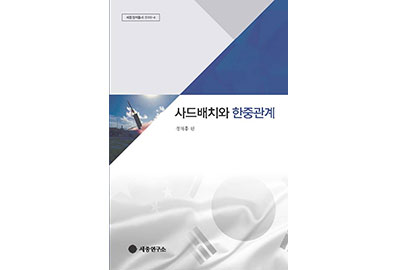The ROK-China relations fell from grace to nadir last year. As the Park Geun-hye administration decided to install THAAD anti-missile system on South Korean soil on July 8, 2016, the bilateral relations rapidly strained. Consequently, the bilateral relationship faced a serious crisis in the 25th year of diplomatic relations – which developed dramatically, once acclaimed as a miracle in bilateral diplomacy since the normalization of ties in 1992. Although the two countries made an outcome of three no’s through consultation regarding the THAAD deployment issue, China still has concerns on the regionalization of ROK-U.S.-Japan trilateral security cooperation. More importantly, as the strategic competition between the U.S. and China intensifies in the region, factors that could trigger military-security confrontation between Korea and China will also gradually increase, as the THAAD exemplified. Therefore, the two countries should strengthen trust-building measures and strategic communications and make efforts to understand each other and the security situation that each other faces.
Despite the row over THAAD deployment, one inextricable fact is that the two countries are crucial neighbors to one another. In geopolitics, there is an old adage, ‘a state cannot change its neighbors.’ Bound by this geopolitical fate, the two countries are at a time when frank and honest communication on bilateral relations or strategic issues is evermore necessary. The foundations of the THAAD deployment issue requires time to be resolved but China has alleviated its stance on the issue and agreed with Seoul to resolve the issue through continuous communication and discussion.
This study has centered mostly on seeking to establish forward-looking relations, while reviewing and considering the rapidly-changed ROK-China relations caused by the recent THAAD deployment issue. The book consists of four chapters. The first chapter titled, “Security Issues between South Korea and China over the THAAD Issue and Strategic Alternatives,” contemplates on the perception gap between the two countries over the THAAD deployment and seeks strategic alternative in the macroscopic view. The second chapter, “The Chinese government’s perception and view on THAAD Deployment,” analyzes in-depth the Chinese leadership’s perception on THAAD deployment on South Korea. With the title, “Thinking China’s Response to North Korean Nuclear Program and South Korea’s THAAD Deployment: Perception through Media,” the third chapter elucidates a balanced analysis of China’s policy on two Koreas. Finally, the fourth chapter addresses an alternative strategy to seek forward-looking bilateral ties based on the topic of “ROK-China Relations after the Settlement on THAAD Deployment Dispute.”
Volume: 2018-4
Publisher: The Sejong Institute
Publication Date: March 15, 2018
Paperback, 153 pages
